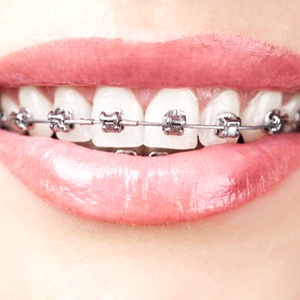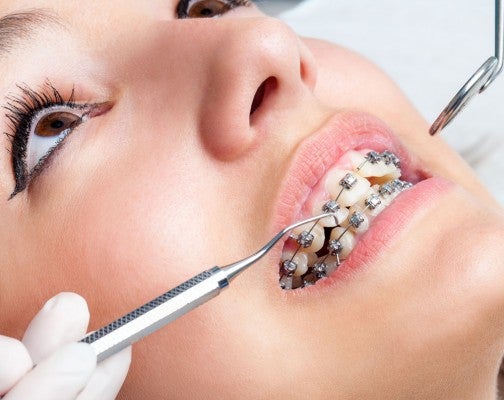Why Cumming Invisalign is the Perfect Selection for a Discreet Orthodontic Remedy
Wiki Article
Comprehensive Guide to Orthodontics Procedures for Fixing Oral Misalignments
Understanding the intricacies of each procedure, including their systems, advantages, and prospective disadvantages, is essential in making educated choices regarding one's orthodontic therapy. As we browse via the detailed overview to orthodontic treatments for correcting oral imbalances, the detailed information of each method will unfold, shedding light on the path towards a unified and useful dental alignment.Orthodontic Procedures Overview

Normal changes and monitoring are important parts of orthodontic treatment to guarantee development is on track and to make any type of required adjustments along the method. By undertaking orthodontic treatments, patients can not just attain a straighter smile but additionally boost their overall dental health and wellness and feature.
Traditional Braces: Just How They Work
When considering orthodontic treatments for dental misalignments, conventional dental braces stand out as a tried and true method for remedying teeth placing. Conventional dental braces consist of brackets, cords, and bands that function with each other to use continuous pressure on the teeth, gradually moving them into the desired positioning.
One secret element of just how conventional braces job is the procedure of bone renovation. As pressure is used to the teeth through the braces, the bone bordering the teeth is reshaped to sustain the new tooth positions. This remodeling is crucial for the lasting security of the corrected positioning. Individuals will need normal changes at the orthodontist's workplace to make sure the braces continue to apply the appropriate stress for effective teeth movement.
Unnoticeable Aligners: Pros and Disadvantages
These clear, tailor-made trays are basically invisible when worn, making them an appealing alternative for people looking for a much more visually pleasing orthodontic treatment. Patients can eliminate the aligners before eating or cleaning their teeth, minimizing the threat of food obtaining stuck in the device and simplifying the cleansing procedure.
Surgical Orthodontic Options
Surgical interventions in orthodontics present sensible options for resolving complex dental imbalances that might not be efficiently settled through traditional orthodontic treatments. While invisible aligners and conventional dental braces can deal with numerous orthodontic problems, particular cases require surgical intervention to attain optimum results. Surgical orthodontic options are normally advised for severe malocclusions, significant jaw disparities, and situations where the underlying bone framework needs modification to accomplish appropriate positioning.One usual medical orthodontic treatment is orthognathic surgical treatment, which includes rearranging the jaws to correct functional issues such as difficulty chewing or speaking. This surgery is commonly done in cooperation with an orthodontist that assists line up the teeth before and after the procedure. Surgical orthodontics may also involve procedures to expose affected teeth, remove excess gum tissue, or reshape the jawbone to develop an extra unified facial account.
Prior to taking into consideration medical orthodontic choices, clients undergo a comprehensive evaluation to determine the need and possible advantages of such treatments. invisalign. While surgical treatment may appear complicated, it can substantially improve both the feature and appearances of the smile in situations where conventional orthodontic treatments drop short
Retainers and Post-Treatment Treatment

Failing to comply with post-treatment care guidelines can result in regression, where the teeth gradually move back towards their original placements. Regular retainer wear, good oral health, and normal dental check-ups are necessary for maintaining the results accomplished via orthodontic surgical treatment and making certain the long-term stability of the fixed oral placement.
Verdict
In conclusion, orthodontic procedures use numerous alternatives for fixing dental misalignments. Standard dental braces make use of steel braces and cords to change teeth right into appropriate placement. Unseen aligners provide a more discreet choice yet might not appropriate for all cases. Surgical orthodontic options are available for extra serious misalignments. Retainers are commonly used post-treatment to preserve the new positioning. In general, orthodontic treatments can efficiently improve dental health and visual look.As we browse with the extensive guide to orthodontic treatments for remedying dental imbalances, the complex information of each approach will certainly unfold, shedding light on the course toward a unified and practical dental alignment. - braces
One of the most common orthodontic therapies is the use of dental braces, which consist of steel brackets and cords that apply mild pressure to gradually move teeth into the preferred position.When taking into consideration orthodontic treatments for invisalign oral misalignments, typical braces stand out as a reliable method for dealing with teeth positioning. In addition, unnoticeable aligners might not be appropriate for intricate orthodontic issues that call for more considerable teeth activity, as they are usually advised for moderate to modest cases. Retainers are customized orthodontic tools developed to hold teeth in their remedied positions after the completion of orthodontic therapy.
Report this wiki page